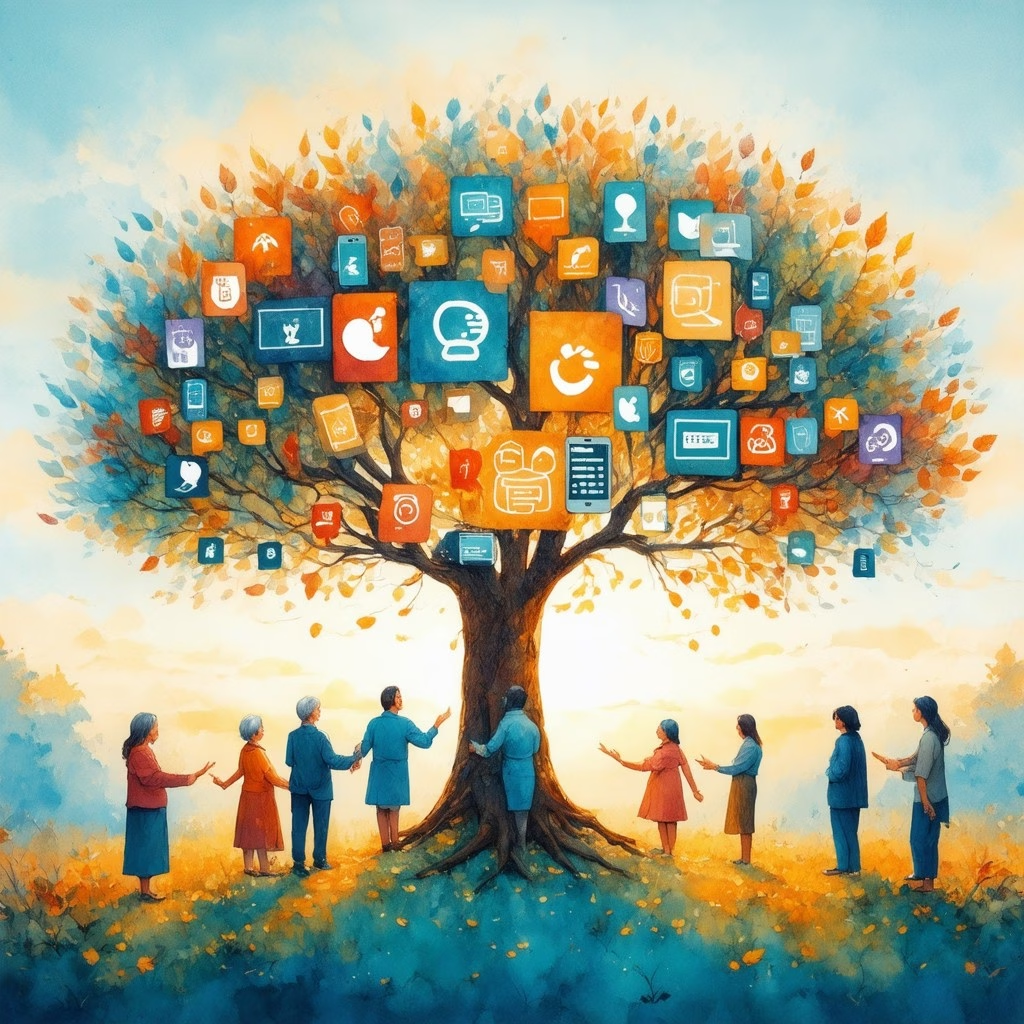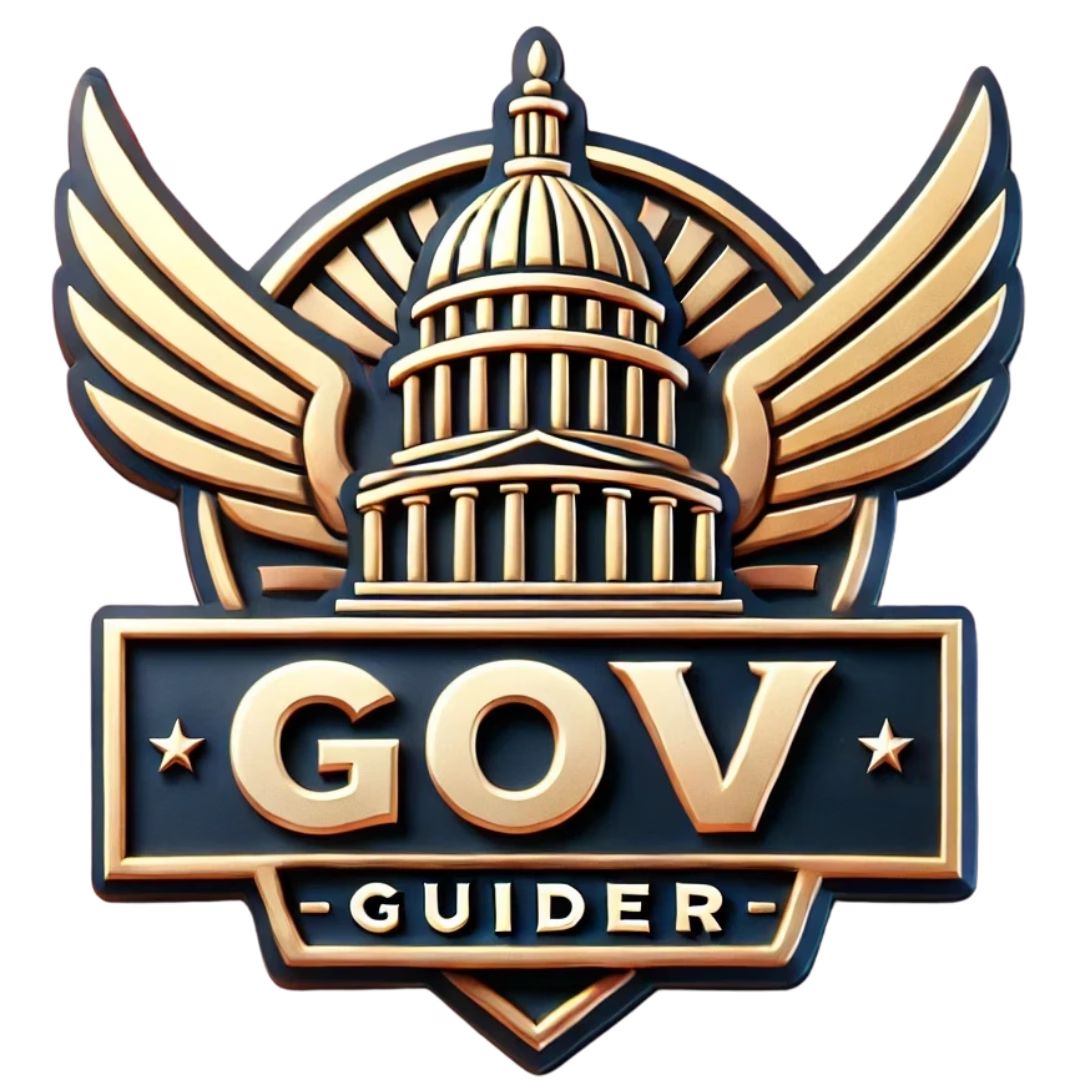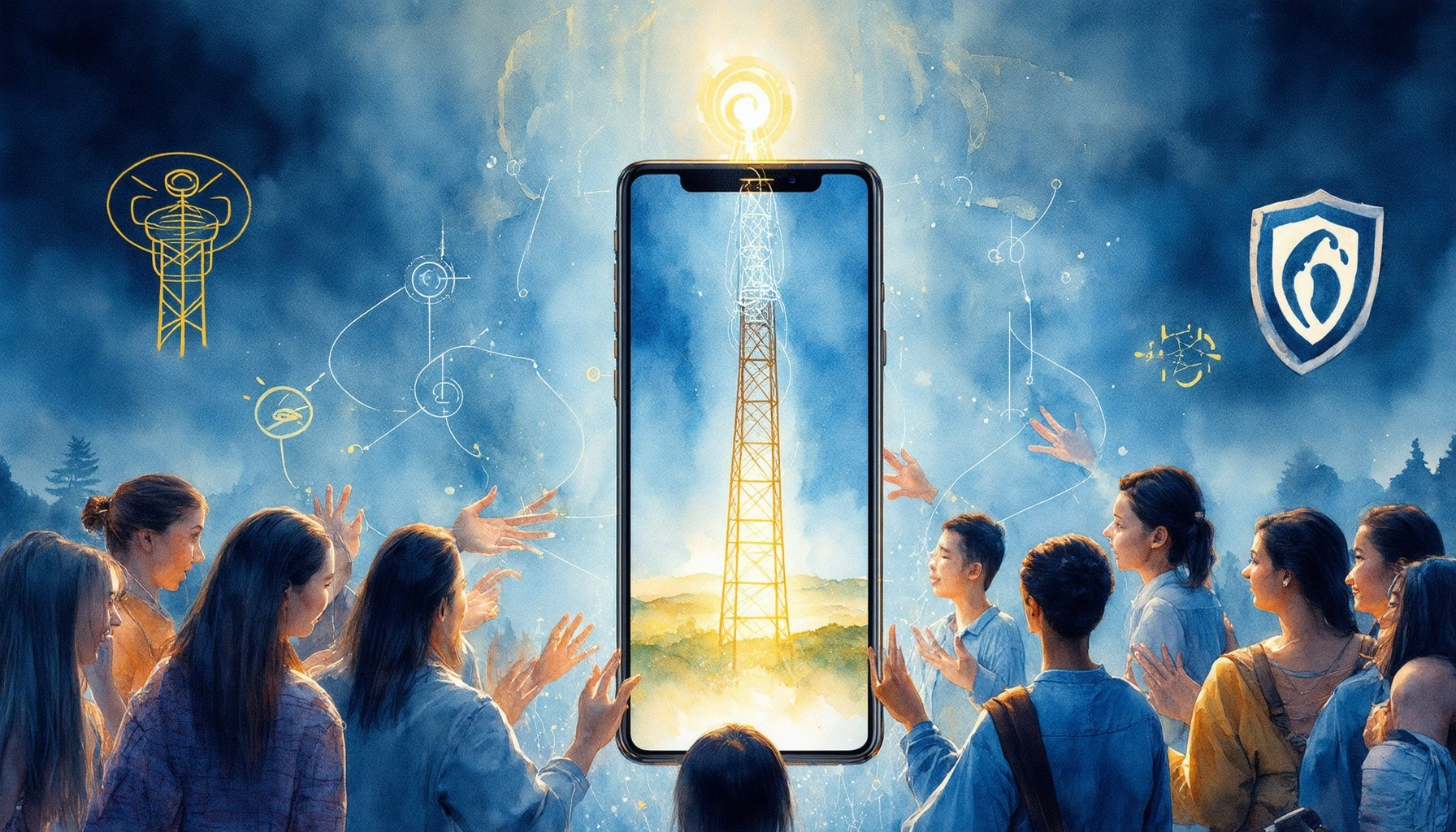Key Takeaways
- The Gov Lifeline Program provides essential communication services to low-income individuals, ensuring access to affordable phone and internet services.
- Eligibility is based on income or participation in government assistance programs like SNAP and Medicaid, with additional benefits for those on Tribal lands.
- Eligible participants can receive discounts of up to $9.25 per month for phone and internet services, or $34.25 for those residing on Tribal lands.
- The application process is straightforward, involving the selection of a service provider and submission of eligibility documentation.
- Social Security recipients can access free or discounted internet options through the Lifeline program, enhancing connectivity and access to vital resources.
- Understanding the differences between the Lifeline program and the Affordable Connectivity Program (ACP) is crucial for maximizing benefits.
In today’s digital age, access to communication is essential, especially for low-income individuals relying on government assistance. The Gov Lifeline Program serves as a vital resource, offering affordable phone and internet services to those who qualify. This article will delve into everything you need to know about the Lifeline Assistance Program, including its eligibility criteria, benefits, and how to secure a Lifeline government phone if you’re a Social Security recipient. We will explore the differences between the Lifeline program and the Affordable Connectivity Program (ACP), the financial assistance provided, and the steps to apply for Lifeline assistance. Additionally, we will address common questions such as how much Lifeline costs and whether individuals on Social Security can access free internet. By the end of this guide, you will have a comprehensive understanding of the Lifeline program, ensuring you can take full advantage of the benefits available to you.
What is the Lifeline program?
The Lifeline program is a vital initiative aimed at providing affordable communication services to low-income individuals and families across the United States. This federal program ensures that those who struggle financially can maintain essential communication through discounted phone and internet services. By bridging the digital divide, the Lifeline Assistance Program plays a crucial role in promoting connectivity and access to information for all Americans.
Overview of the Lifeline Assistance Program
The Lifeline Assistance Program offers significant benefits to eligible participants, including reduced rates on lifeline phone service and lifeline program internet. This program is administered by the Federal Communications Commission (FCC) and is designed to help low-income households stay connected with family, friends, and essential services. The Lifeline program not only provides financial assistance but also empowers individuals by ensuring they have access to vital communication tools.
Importance of Lifeline for low-income individuals
The Lifeline program is particularly important for low-income individuals as it helps alleviate the financial burden associated with communication costs. Many low-income households rely on lifeline assistance program free phone options to maintain contact with healthcare providers, potential employers, and educational resources. By participating in the Lifeline program, these individuals can access essential services that contribute to their overall well-being and stability.

Who is eligible for the federal Lifeline program?
The Lifeline program is designed to assist low-income individuals and families by providing essential telecommunications services. Understanding the eligibility criteria is crucial for those looking to benefit from this valuable program.
Eligibility criteria for Lifeline program
To qualify for the Lifeline Assistance Program, applicants must meet specific criteria. Eligibility is primarily determined by income or participation in government assistance programs. Here are the key points:
- Income-Based Eligibility: Applicants must have a household income at or below 135% of the federal poverty guidelines.
- Program Participation: Alternatively, individuals can qualify if they participate in certain government assistance programs, such as SNAP (Supplemental Nutrition Assistance Program), Medicaid, or Federal Public Housing Assistance.
- Tribal Lands: For those living on Tribal lands, the Lifeline program offers additional benefits, including a higher monthly discount.
For more detailed information on eligibility, you can visit the FCC Lifeline Program Information page.
How to apply for Lifeline assistance
Applying for Lifeline assistance is a straightforward process, but it requires careful attention to detail. Here’s how you can apply:
- Choose a Service Provider: Start by selecting a participating telecommunications provider that offers Lifeline services. Many providers offer both Lifeline phone and internet options.
- Complete the Lifeline Application: You can fill out the Lifeline application form online through the National Verifier or directly with your chosen service provider.
- Provide Documentation: Be prepared to submit proof of eligibility, which may include income statements or documentation of participation in qualifying assistance programs.
- Await Confirmation: After submitting your application, you will receive confirmation of your eligibility status. If approved, you can start enjoying the benefits of the Lifeline program.
For further assistance, you can contact Lifeline customer service for guidance throughout the application process.
Is Lifeline Program and ACP the Same Thing?
The Lifeline program is a federal initiative designed to provide affordable telecommunications services to low-income households. While both the Lifeline program and the Affordable Connectivity Program (ACP) aim to enhance access to communication services, they are distinct in their offerings and eligibility criteria. Understanding these differences is crucial for individuals seeking assistance.
Differences Between Lifeline Program and ACP Program
The primary difference between the Lifeline program and the ACP lies in the type of services they support. The Lifeline program focuses on providing discounts on phone and internet services, offering a monthly discount of up to $9.25 for eligible households, and up to $34.25 for those on Tribal lands. In contrast, the ACP is designed to provide broader financial assistance for internet services, including a discount of up to $30 per month for eligible households and $75 for those on Tribal lands.
Additionally, the eligibility requirements differ. While both programs require participants to meet certain income thresholds or be enrolled in specific federal assistance programs, the ACP has a more extensive list of qualifying criteria, including participation in programs like the National School Lunch Program or the Federal Pell Grant.
Benefits of the Lifeline Program Compared to ACP
The Lifeline program offers unique benefits that cater specifically to low-income individuals needing essential communication services. One of the key advantages is the provision of a lifeline phone service, which ensures that individuals can maintain connectivity for emergencies, job searches, and essential communications. Furthermore, the Lifeline assistance program free phone options allow eligible participants to receive a free government phone, enhancing accessibility for those who may not have the means to purchase a device.
In contrast, while the ACP provides significant internet discounts, it does not offer the same level of support for phone services. For individuals who rely heavily on voice communication, the Lifeline program remains a vital resource. For more information on the benefits and eligibility of the Lifeline program, you can explore the Lifeline Program Information from the FCC.
How much does the Lifeline program pay?
The Lifeline program offers significant financial assistance to eligible low-income individuals, ensuring they have access to essential communication services. The federal Lifeline benefit program provides a monthly discount on phone and internet services, which can vary based on the type of service and the provider. Typically, the Lifeline program pays up to $9.25 per month for eligible customers, which can be applied to either a lifeline phone service or lifeline internet service. In some states, this benefit can be even higher, allowing for greater savings on communication costs.
Financial assistance provided by the Lifeline program
The financial assistance from the Lifeline program is designed to alleviate the burden of communication costs for low-income households. Here’s a breakdown of what you can expect:
- Lifeline Phone Service: Eligible participants can receive a discount on their monthly phone bill, which can cover basic voice services, including local and long-distance calls.
- Lifeline Internet: For those who qualify, the program also extends to internet services, providing a discount that helps ensure access to online resources and connectivity.
- Free Phone Options: Many providers offer a lifeline assistance program free phone option, which includes a basic smartphone or a feature phone, along with a monthly service plan that typically includes a set number of minutes, texts, and data.
To maximize your benefits, it’s essential to compare different providers and their offerings. You can explore options through the maximizing benefits of the Lifeline program guide for more insights on payments and eligibility.
Understanding the federal Lifeline benefit program
The federal Lifeline benefit program is a crucial resource for low-income individuals, ensuring they can maintain communication with family, friends, and essential services. Understanding how this program works is vital for those looking to apply for Lifeline assistance:
- Eligibility Verification: Applicants must verify their eligibility through programs such as Medicaid, SNAP, or Social Security. This verification process is essential to receive the benefits.
- Annual Recertification: To continue receiving the Lifeline benefit, participants must recertify their eligibility each year, ensuring that they still meet the program’s criteria.
- Provider Selection: Participants can choose from various telecommunications providers that participate in the Lifeline program, each offering different plans and services tailored to meet diverse needs.
For more detailed information about the Lifeline program, including how to apply, visit the Lifeline Program Information page.

How Much Does the Lifeline Program Cost?
The Lifeline program provides essential support for low-income individuals, but understanding the costs associated with Lifeline phone service and Lifeline program internet options is crucial for potential beneficiaries. The Lifeline program is designed to ensure that everyone has access to communication services, which is vital in today’s world.
Costs Associated with Lifeline Phone Service
The Lifeline phone program offers significant savings for eligible participants. Typically, the Lifeline program provides a discount on monthly phone service bills, which can range from $9.25 to $34.25, depending on the state and the type of service. This assistance is particularly beneficial for those who rely on their phones for essential communication.
For those interested in medical alert systems, Lifeline offers a comprehensive service with an initial activation fee of $99.95. Following this, users are charged a monthly fee of $49.95, which includes essential features such as fall detection. This service is particularly beneficial for seniors seeking reliable protection both at home and while out, ensuring peace of mind through immediate access to emergency assistance.
- Activation Fee: $99.95 (one-time payment)
- Monthly Subscription: $49.95 (includes fall detection)
- Target Audience: Primarily designed for seniors who require safety and support in daily activities.
Additional features may include medication reminders and GPS tracking, which can be tailored to individual needs. For more detailed information on pricing and features, you can refer to SafeHome.org and other authoritative sources that review medical alert systems.
Lifeline Program Internet Costs and Benefits
The Lifeline program internet options provide eligible households with a monthly discount on internet service, making it more affordable for low-income families to stay connected. The discount can significantly reduce the cost of internet service, allowing families to access educational resources, job opportunities, and essential services online.
By applying for Lifeline, individuals can not only secure a lifeline phone but also gain access to affordable internet services, which are crucial in today’s digital age. To learn more about how to apply for Lifeline and maximize your benefits, visit our guide on maximizing benefits of the Lifeline program.
How much does Lifeline cost?
The Lifeline program is designed to provide affordable communication services to low-income individuals, ensuring that everyone has access to essential phone and internet services. Understanding the costs associated with Lifeline is crucial for potential beneficiaries.
Costs associated with Lifeline phone service
The Lifeline phone service offers significant savings for eligible participants. Typically, the program provides a discount of up to $9.25 per month on phone service. For those living on Tribal lands, the discount can be as high as $34.25 per month. This financial assistance is vital for low-income households, allowing them to maintain essential communication without incurring high costs.
To apply for Lifeline, individuals can visit the Universal Service Administrative Company website for detailed information on participating providers and the application process. Additionally, many service providers offer Lifeline plans that include free or low-cost phones, enhancing accessibility for users.
Lifeline program internet costs and benefits
In addition to phone services, the Lifeline program also supports internet access through the Lifeline program internet initiative. Eligible participants can receive discounts of up to $9.25 per month on their internet service. This benefit is crucial for low-income families, especially in today’s digital age where internet access is essential for education, employment, and healthcare.
To maximize the benefits of the Lifeline program, individuals should explore various internet service providers that participate in the program. Some providers may offer additional discounts or bundled services, making it easier to secure affordable internet access. For more insights on maximizing benefits, check out our guide on maximizing benefits of the Lifeline program.
Do people on social security get free internet?
The Lifeline program offers internet options specifically designed for low-income individuals, including those receiving Social Security benefits. This program aims to ensure that everyone has access to essential communication services, which is particularly crucial for seniors and individuals with disabilities. Under the Lifeline program, eligible participants can receive discounts on internet services, making it more affordable for them to stay connected.
Lifeline program internet options for social security recipients
Social Security recipients can benefit from the Lifeline program’s internet options, which include substantial discounts on monthly internet service costs. Depending on the provider, eligible individuals may receive a discount of up to $9.25 per month for internet services. Some providers may even offer additional benefits, such as free or low-cost internet plans tailored for low-income households. To find out which providers offer these services in your area, you can visit the Universal Service Administrative Company website.
Additional resources for free internet access through Lifeline
In addition to the Lifeline program, there are other resources available for free internet access. For instance, the Affordable Connectivity Program (ACP) complements Lifeline by providing additional discounts on internet services for eligible households. This program can further reduce the cost of internet access, making it easier for Social Security recipients to connect online. To explore these options, you can check out the guide on free internet with government assistance.




